Ten miles south of the North Carolina state line, traffic lights flicker above pristine pavement in Rock Hill. Interstate 77 roars beneath a new concrete bridge at an exit that cost taxpayers $90 million.
The exit road was being built for the Carolina Panthers’ new Rock Hill headquarters and practice facility — but that was before the team quit the $2 billion project two years ago in a messy, high-profile break-up.
Still, work on the Palmetto Parkway interchange continued. Now, as drivers finally begin to use it, the Exit 81 bridge leads straight into a series of crucial questions, including: Should it have been finished? Who wound up paying for it?
And the question that could impact the city for decades: What will replace the former Panthers site? Until that’s answered, Palmetto Parkway largely will remain a $90 million interchange to nowhere.
To unpack those questions, The Herald reviewed about 400 emails and more than 1,000 pages of local and state records related to the road project obtained under the S.C. open records law. Interviews with city, regional and state officials, along with insight from economic development professionals, show a city at a crossroads.
Optimism remains high among local officials, but so are the stakes.
It’s critical that the city waits for the right type of investment for the site, Rock Hill Mayor John Gettys said, meaning life sciences or advanced innovative manufacturing.
“We could have employers on the site real soon if we wanted,” he said. “But I think 20 years from now, we look back and say, ‘Gosh, we really missed a great opportunity there.’ ”

Courting the Panthers with infrastructure
Rock Hill courted the Charlotte-based NFL team six years ago for a headquarters on the 245-acre Hutchison family property fronting the interstate.
The Panthers signed on to anchor $2 billion worth of commercial, hospital, hotel, restaurant and other projects. Local leaders called it the biggest economic development project ever in York County.
The new interchange taking traffic to and from the proposed Panthers headquarters was critical to luring the team.
The new exit would have “Panther blue” sections and a federal request to price a light rail service extension from Charlotte, then-state Department of Transportation Secretary Christy Hall emailed city manager David Vehaun in February 2019.
That spring, S.C. legislators approved $115 million in tax incentives after billionaire Panthers owner David Tepper said the team wouldn’t move without them. Team and state officials discussed a new $40 million exit off the interstate. Federal dollars would pay for half. The state would add $12.5 million and Rock Hill the rest, at $7.5 million.
By 2020, costs had more than doubled.
In the summer, South Carolina DOT received almost all of the $39.5 million it requested from the feds, based on a projected $88 million cost for the exit. The state Department of Commerce committed $40 million while the city would pay $1 million. And the Panthers would be responsible for $8 million of roads within its property.
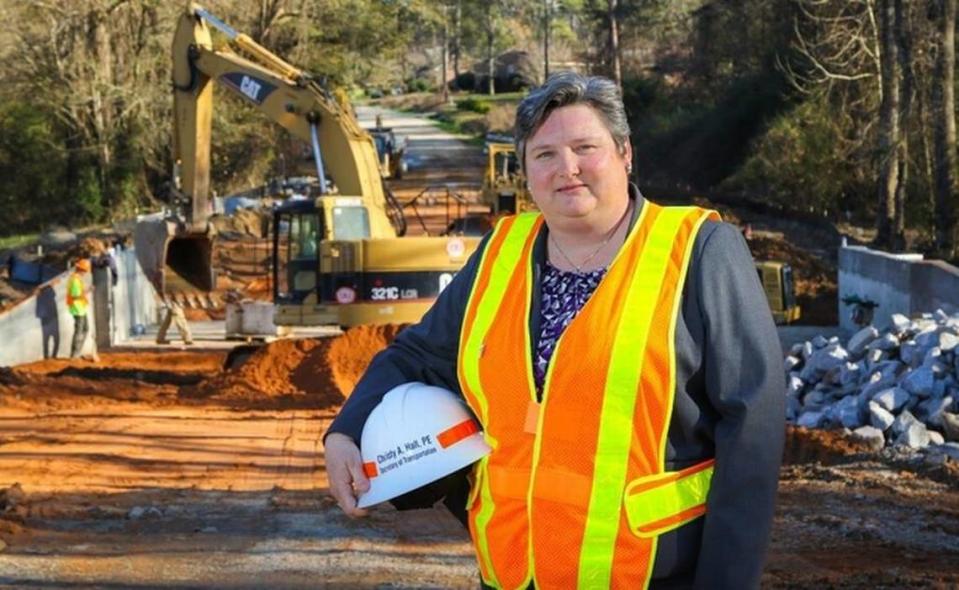

Breaking up with the Panthers
Then, in early 2022, the project collapsed. A public breakup followed over disagreement between the team and city over funding $225 million of public infrastructure.
Construction stopped, the company the Panthers set up to develop the site filed for bankruptcy, lawsuits flew and the property hit the market. The city took ownership through bankruptcy, and the massive headquarters building came down before it was finished.


Rock Hill doesn’t know when something will replace the Panthers’ plans. But there’s hope it’ll be big and the new interchange built to serve the property is a major reason why.
“We can create our own future,” the mayor said.
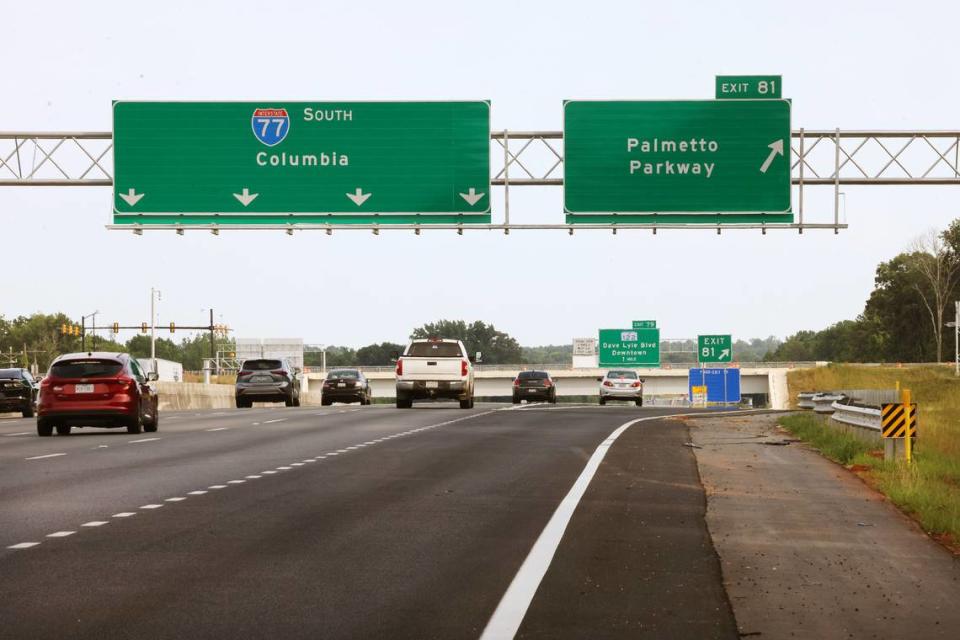

How did we get here? A timeline on the Panthers project in Rock Hill as contract ends
Avoiding a ‘bridge to nowhere’
Two days after news broke in April 2022 that the team was pulling out, SC DOT’s Hall maintained the I-77 job would go on.
“We will continue to build the interchange and not slow down,” she wrote in an email to her commissioners. “The locals will need to work thru their issues with the Panthers, but if not, the interchange is still needed and will serve the county’s industrial park and other economic development in the region.”
By the fall, elected officials from across the region were split on whether to move $10 million of federal money from a Celanese Road interchange project to cover roads the Panthers agreed to fund before the headquarters plan collapsed.
Mayor Gettys argued the Exit 81 interchange couldn’t open without someone paying the Panthers portion. “Do we want to have a bridge to nowhere in York County?” he asked at the time.
Should $10 million in public money pay for roads the Panthers were supposed to pave?
The state stuck by the interchange.
In March 2023, Hall emailed her commissioners that interstate congestion, future development at Rock Hill Overlook and dramatic industrial and residential growth still warranted the new road. The cost of the former Panthers’ portion jumped to $12 million.
At Hall’s request, transportation department chief counsel Barbara Wessinger emailed city and state Commerce Department officials with a draft agreement to pay for Palmetto Parkway.
Federal and state commerce grants would kick in $5.3 million each from prior allocations to the project. The city would contribute $1.5 million. The agreement was finalized in January.


‘A tale of two cities’
The Panthers proposal initially brought with it a Disney World or Carowinds type of excitement, Gettys said in an interview. There’s a different energy now.
Signs along the property’s perimeter listed life sciences, biomedical or innovative manufacturing as top targets. Along with corporate headquarters, those options would bring the most high-paying jobs. The city doesn’t want distribution, warehouse or large-scale residential construction there.
High pay is critical. Since Gettys became mayor in 2018, the city unemployment rate dropped from above 4% to 2.8%. From 2019 to last year, the market value of property in Rock Hill grew 32% to $7.3 billion, Gettys said.
Yet the poverty rate is 13% and a third of residents live on a fixed income. “That’s our community,” the mayor said. “It’s a tale of two cities.”
Gettys doesn’t like how the Panthers left Rock Hill, but sees a silver and blue lining. Prior to the Panthers, the Hutchison property was under contract for distribution sites similar to what’s across the interstate near Riverwalk.
“I don’t think that would’ve been a good outcome for our city long-term,” Gettys said. “They don’t bring high wages and they don’t employ a lot of people.”


Rock Hill’s work on a new interchange predates the Panthers involvement, a Herald public records review found. A 2019 federal grant request based on a $50 million exit was denied. It envisioned a 1.7 million-square-foot business park. Then the Panthers proposal changed everything.
Companies and individuals have reached out with proposals similar to other business areas of Rock Hill. “We’re not interested in that at this time,” Gettys said.
How important is the site?
Mark Williams doesn’t see a unicorn in Rock Hill.
“It’s not a once-in-a-lifetime thing,” said the founder of Greenville-based site selection firm Strategic Development Group. “But it’s not easy to find these sites, either. So I think that’s a real asset for Rock Hill.”
There’s a huge need for manufacturing along interstates, he said, but big headquarters demand slowed the past year. High interest rates and persistence of remote work are challenges. Still, Rock Hill has advantages for attracting projects.
When the next wave of new business hits the York County region, will we be ready?
The high-growth Charlotte metro and quality of life with lower South Carolina taxes help, Williams said. Decades of Charlotte-area manufacturing by companies headquartered in New York or Chicago could mean opportunities to move regional headquarters to the area.


If Rock Hill asked for his advice, Williams would recommend targeting multiple small to medium companies that could create a destination campus. It’s similar to Kingsley in Fort Mill where LPL Financial, Lash Group, Domtar and others are located.
“It would be more diversified,” Williams said. “Possibly less risk for Rock Hill.”
Even with a ready and desirable site, Williams wouldn’t expect new construction within a year. “If somebody said what’s the timing where we shouldn’t be disappointed, I’d say three to five years,” he said.
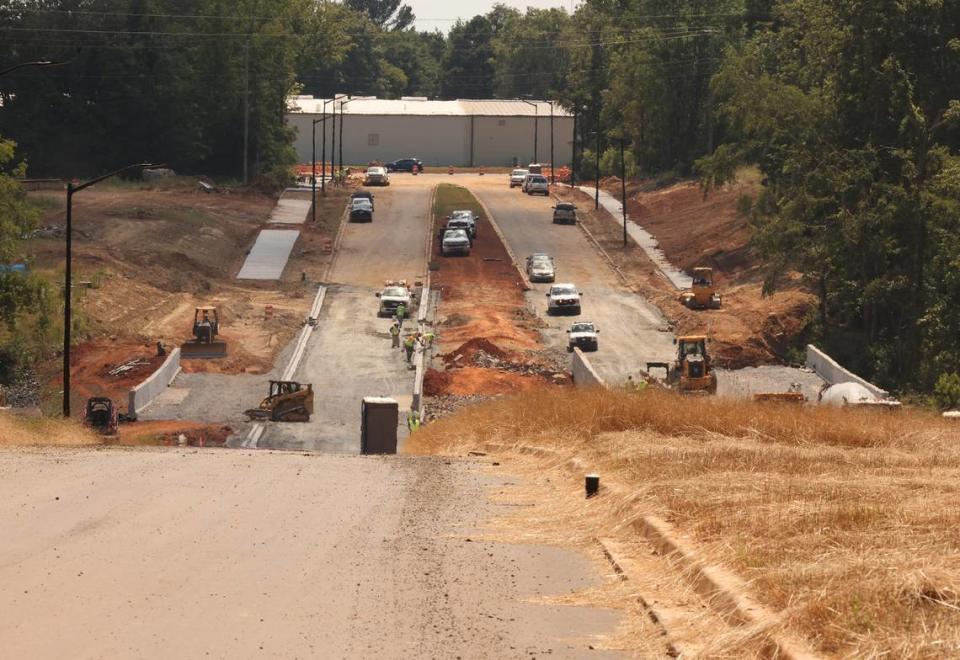

Pitching the Rock Hill site
Attorney Stephanie Yarbrough toured Rock Hill development sites with city officials this month, and sees them as a great fit for life sciences companies.
“Those jobs are out there,” said Yarbrough, a King & Spalding partner who runs the firm’s Washington, D.C., global economic development and incentives practice.
Most companies looking to relocate want to be operational within a year to 18 months, she said. A new interchange often takes several times that long to design, permit and build.


“They will pass on a site because the timeline to get something as significant as an interchange,” Yarbrough said.
What proposals are out there?
Last summer, Rock Hill got an ambitious pitch for the old Panthers site.
Tega Cay architect Michael Kazak emailed city officials on behalf of an unnamed client. A proposal called Waterridge would combine energy and media companies on a shared campus.
Two six-story office buildings would bring 450 jobs. And the first of two phases would bring more than $1 billion of investment, Kazak claimed.
The project would include a 200-bed children’s and women’s hospital, plus a convention and event center, an entertainment complex, a performing arts site, three hotels, a private school, a senior living facility and high-rise condos, according to Kazak.
The proposal also listed movie production and music studios, a children’s museum, a youth athletics facility and space for restaurants and retail.
The city received a letter of intent in January from Waterridge Energy Management Solutions seeking to acquire the property.
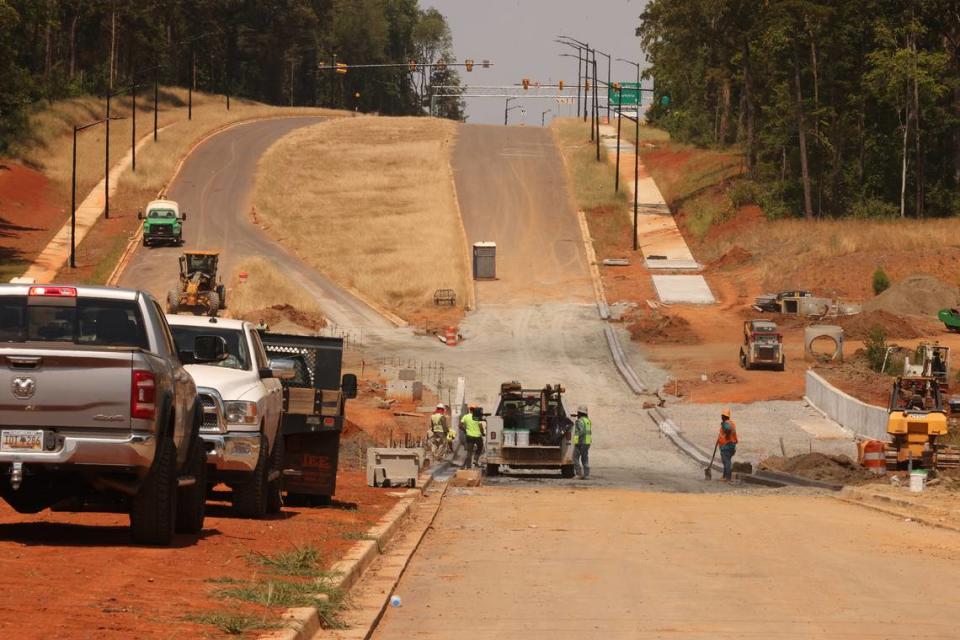

Emails from Kazak to the city last year stated $800 million was secured for development, with another $800 million anticipated after the Waterridge developer launches an initial public offering. Kazak should know within about three months whether funding is available, he told The Herald this month.
Whatever goes on the site now should aim just as big as the Panthers did, Kazak said. “I feel that we have that, in this,” he said.
Gettys declined to discuss any proposal, including Waterridge’s. No deals are imminent.
“I don’t think that anything outside of life sciences, advanced innovative manufacturing and the like, make much sense,” Gettys said.
Will big-city dreams create a new economic sector?
In 2018, Gettys dreamed big when he wrote to Tepper to consider Rock Hill for the team’s headquarters. Gettys still dreams big.
The former Panthers site could be the centerpiece to creating a new sector of the state’s economy, a biomedical or pharmaceutical wave across the Rock Hill region, Gettys said.
There are 1.3 million workers within a 45-minute drive of Rock Hill. A dozen miles of interstate separate more built out parts of Rock Hill, north of Exit 77, from Chester County. Decades of growth could follow.
The mayor doesn’t believe the city will get this kind of opportunity again.
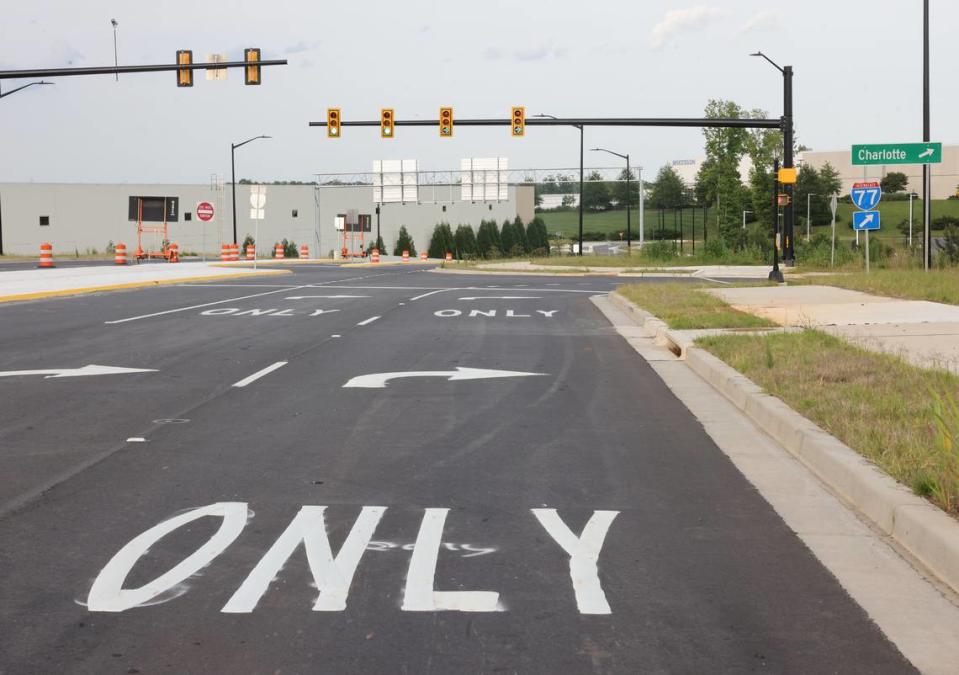

“It doesn’t happen,” Gettys said. “How do I know that? Name another one.”
Gettys stands behind the city’s decisions thus far. But he knows final judgment depends on what happens next.
Rock Hill will “come out on the good side of it,” Gettys said, “provided it gets developed.”
Reality Check reflects the Rock Hill Herald’s commitment to holding those in power to account, shining a light on public issues that affect our local readers and illuminating the stories that sets the Rock Hill region apart. Email [email protected]
Source Agencies



